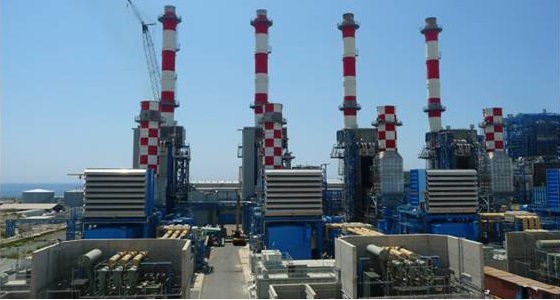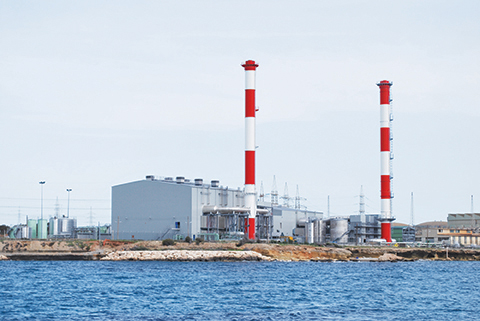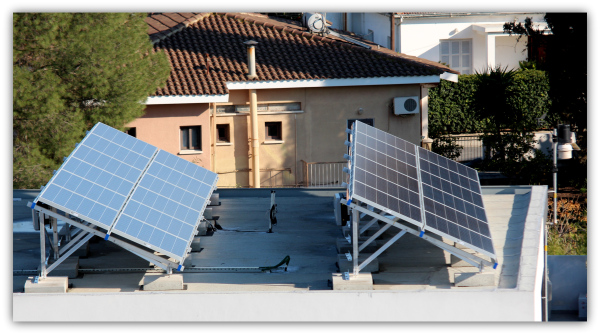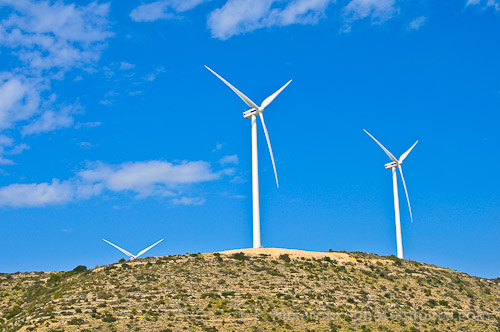
Thermal Power Generation
EAC operates three thermal power stations. | Renewable generation
Active involvement in the construction of large RES projects. |
thermal power generation
Cyprus is an island with no indigenous hydrocarbon energy sources. This means that its power generation system operates in isolation and totally relies on imported fuels for electricity generation. Currently, the primary imported fuel used in electricity generation is heavy fuel oil and gasoil. Cyprus power generation system consists of three thermal power stations with a total installed capacity of 1480MWe. Dhekelia power station is located on the southeast coast of Cyprus, to the east of Larnaca and consists of 6x60MWe steam turbines and two 50MWe internal combustion engines blocks. Vasilikos power station is the most recent power station located on the south coast between Limassol and Larnaca and consists of 3x130MWe steam turbines, 2x220MWe combined cycle technology units and a 38MWe gas turbine. Moni power station, which is used as backup, is located on the south coast of Cyprus, to the east of Limassol and consists of 4x37.5MWe gas turbines.
The steam units at Vasilikos are used for base load generation, while the steam units of Dhekelia are used for intermediate load generation. The gas turbines are mainly used during system peak loading. All stations use heavy fuel oil for the steam turbine units and gasoil for the gas turbine units. The combined cycle units use gasoil as fuel until the arrival of natural gas in Cyprus, which is expected to be available on the island in 2016. Also, in 2016 the 3 steam turbines at Vasilikos power station will shift from the use of heavy fuel oil to the use of natural gas.

For more details regarding the thermal power generation of EAC could be found in the website  Generation System.
Generation System.
ENVIRONMENTAL PERFORMANCE
As a company with the goal of sustainability, we believe that we are responsible for the proper management of the environment around our facilities. Therefore we have compiled specialized waste and/or our leaks and any other ingredients that are used in our daily activities, management systems. Those systems ensure the full protection of the surrounding area.

Landscape recovery
EAC take care of the environment, especially in the areas where the thermal power stations are operated. | Protection of the sea
EAC, due to the fact that its thermal power stations are located near to the coasts, is particularly sensitive to issues concerning wastewater streams to the sea. |
Landscape Recovery
EAC take care of the environment, especially in the areas where the thermal power stations are operated. During the erection of the Vasilikos power station, EAC gathered in a special clay tank the chemical waste from the chemical industries which were operated in the adjacent area, neutralized them and then proceeded to the burial of this tank. In the space above the tank EAC proceeded with the planting of trees, creating a wooded area.
After the destruction of the power station in July 2011 and the reconstruction of the station, EAC proceeded in the reforestation of the burned wooden area.
EAC has specific plan regarding the safe decommissioning of its power stations. Specifically, for the Moni power station, which in the near future will be demolished, EAC has proceed into a survey and an environmental study for the recording of all asbestos residues and other substances on the premises of the station. In addition, this study will demonstrate the wisest way for the management of those residues and substances by a specialized system, in order to avoid during the decommissioning of the station any negative effects in the environment and the health and safety of the workers and the residents of the surrounding area.
Protection of the sea
EAC, due to the fact that its thermal power stations are located near to the coasts, is particularly sensitive to issues concerning wastewater streams to the sea. For this reason and in order to avoid any contamination of the sea, EAC has implemented specialized systems for the retention, processing and neutralizing of harmful substances. Specifically, in the Dhekelia power station a chemical treatment system is operating, where the chemical derivatives from the two thermal power stations are treated. In addition, organic sewage treatment systems are operating in both power stations. For the avoidance of leaks to the sea due to an accident in the Vasilikos power station we use grease traps. The use of grease traps will also be applied in Dhekelia power station.
renewable generation
EAC has committed to help in the integration of RES plants in the Cyprus power generation system. With this in mind, EAC has prepared in 2010 a Strategic Action Plan for the period of 2011-2020, for the involvement of EAC, either by the construction of its own RES plants or by collaboration via Joint Ventures with private firms in RES projects. According to the 2010 EAC Action Plan, if the future legal framework allows it, EAC will try to construct and operate PV parks of a capacity of up to 130MW. Currently, this Action Plan is under review in order to become fully aligned with the updated Cyprus RES National Plan. In addition, in order to enhance the knowledge of our human resources in the new innovative RES technologies, EAC is participating in European research programs for innovative RES technologies.

Photovoltaics
EAC will construct either on its own or by collaboration via Joint Ventures with private firms large PV parks. | Wind Parks
EAC has made various efforts for the construction of wind parks through collaboration via Joint Ventures with private firms |
Biomass Units
EAC is ready for collaboration via Joint Ventures with private firms for the construction of biomass units. |
Photovoltaics
EAC participated in the lowest bidder process in January 2013 and was awarded a 3MW PV Park. The park shall be constructed at the area of Tseri Substation. The project is under the final stages of licensing and is expected to be operational in March 2014. Furthermore, EAC is examining the construction of a large PV park with a capacity of about 20MW in the area of Akrotiri, in collaboration with the Holy Bishopric of Limassol. In addition to that, in 2012, EAC through an international tender invited private firms to express their Interest for participation in a Joint Venture with EAC for large PV Parks. Through this process, EAC has already signed Memorandums of Agreement with two firms. The agreements concern the construction of two PV parks with one firm, one at the area of Politikos with a capacity of 4,85MW and one at Lythrodontas area with a capacity of 6,66MW, and the construction of another PV park at the area of Mitsero with a capacity of 10MW with a second firm.

EAC, as part of its social policy and responsibility, has announced in 2013 a plan for installing 200 photovoltaic systems of a nominal power output capacity of 3kW each, on the rooftops of consumers who are eligible to receive funding from CERA’s plan for the introduction of net metering. This group of people has suffered the most from the economic crisis and cannot afford to install such systems even if they receive the funding. EAC has therefore prepared a financing plan which offers the opportunity to this specific group, to install the system at no initial cost. The cost of the system shall be paid off through bimonthly charging on the consumers’ electricity bills in such a manner so as to ascertain that the final bill shall not exceed the amounts already paid. In other words the saving made from the generation and export of the energy to the grid system shall be higher than the fixed charging. After the system is paid off (4 or 6 years depending from the option selected by the costumer) the consumer can benefit entirely from the generation of the PV system.
For more information regarding the description of the PV technology could be found in the website  Renewable Energy Sources.
Renewable Energy Sources.
.
Wind Parks
In Cyprus, there are 5 wind parks in operation with total installed capacity of 147MWe and licenses for the construction of a further 18MWe capacity wind parks have been given. According to the recent Cyprus RES National Plan, the total installed capacity of wind parks is expected to be 300MWe by 2020.
EAC was the first firm to try to construct a wind park n Cyprus in Kourri, but this effort was unsuccessful due to the fact that the project as deemed not viable at that time. Also, EAC has made various efforts for the construction of wind parks by collaboration via Joint Ventures with private firms, which do not proceed for different reasons.
Despite of the above, EAC is ready to discuss the possible collaboration with any private firm that is interested in constructing a wind park in the future.

For more information regarding the description of the wind technology could be found in the website  Renewable Energy Sources.
Renewable Energy Sources.
Biomass Units
In Cyprus, there are 14 biomass units in operation with total installed capacity of 9.7MWe. According to the recent Cyprus RES National Plan, the total installed capacity of biomass units is expected to be 17MWe by 2020.
EAC is ready to discuss the possible collaboration with any private firm that is interested in constructing a biomass unit in the future.
For more information regarding the description of the biomass technology could be found in the website  Renewable Energy Sources.
Renewable Energy Sources.